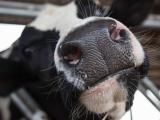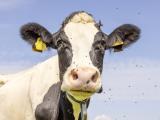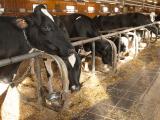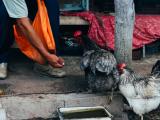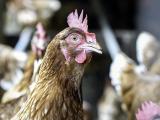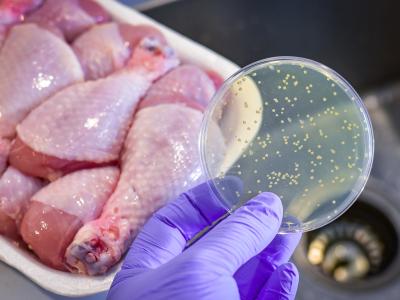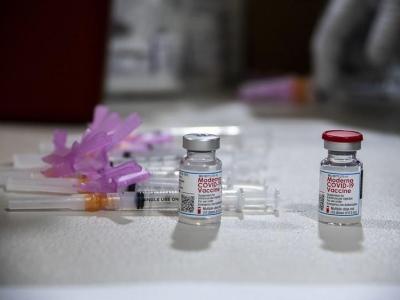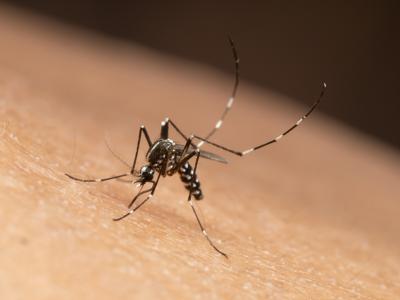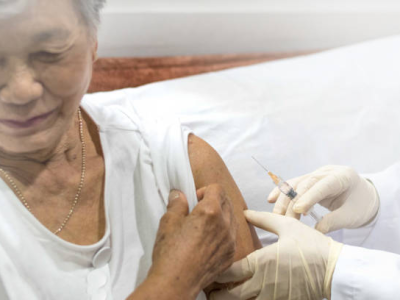Jun 11, 2008 (CIDRAP News) – Animal health workers in Hong Kong are culling all chickens in the city's markets and retail stores after finding the H5N1 avian influenza virus in three more markets, according to news services.
At a press briefing today, government officials said the virus had been found in a total of four markets since the outbreak was first reported on Jun 7, according to a report from Bloomberg News. About 3,500 chickens from 470 stores were slated for culling, the report said.
Cheng Siu-hing, Hong Kong's director of agriculture, fisheries, and conservation, told Bloomberg that samples from the city's chicken farms so far have shown no signs of the virus. The government said it may extend a 3-week suspension of poultry imports from China and exports from local farms if more H5N1 is found.
Hong Kong officials previously announced that five poultry fecal samples from three stalls at a local market had tested positive for the H5N1 virus. They did not say if the testing was done in response to sick or dead birds, and the source of the virus has not been determined.
According to the United Nations Food and Agriculture Organization (FAO), Hong Kong's first reported H5N1 outbreak occurred in 1997and affected both birds and humans. More poultry outbreaks occurred in 2001 and 2002, and in 2003 the virus hit captive wild birds as well. Since 2006, the territory has reported mainly isolated individual cases of infected wild birds and chickens.
In other developments, a South Korean aid group today reported an avian flu outbreak in North Korea near a military base, according to a report from the Associated Press(AP).
The Buddhist-linked Good Friends humanitarian group said North Korean quarantine officials detected an outbreak on Jun 3 near an air force base in South Hamgyong province, northeast of Pyongyang, the capital. The aid group told the AP that several birds were found dead in a small mountainous area, but said it did not know if the H5N1 virus had been confirmed.
An avian flu outbreak has not been reported in North Korea since 2005, when an H7 subtype struck poultry near Pyongyang, according to previous reports.
The aid group also reported suspicious deaths of dozens of magpies inside a political prison camp in North Hamgyong province, along with the death of a prison official's 5-year-old child after having a high fever, the AP reported. The group could not say if the birds had the H5N1 virus or what caused the child's death.
In April, South Korea reported that the H5N1 virus had resurfaced in the southwestern part of the country. The virus quickly spread to nearly all parts of South Korea, though new reports have subsided.
Meanwhile, animal health officials in Indonesia said an avian flu outbreak struck chickens in Jambi province, according to a report today from Antara, the national news agency. The news account did not say if the outbreak involved the H5N1 virus.
Ahmad Surya, head of Sarolangun district's animal husbandry and fisheries service, told Antara that the source of the virus was probably West Sumatra and South Sumatra provinces, which have been hit hard by the virus. Jambi is on the east coast of central Sumatra.
In other developments, veterinary officials from the United States reported to the OIE yesterday that a low-pathogenic H7N3 virus had been identified in samples from chickens at an Arkansas farm where routine preslaughter testing previously had revealed antibodies to the virus.
The report said the virus was isolated at the National Veterinary Services Laboratory in Ames, Iowa.
On the basis of the earlier serology findings, 16,000 birds were culled to prevent any possible spread of the virus, and Arkansas officials ordered increased surveillance at nearby farms. The OIE report said the birds were 65-week old broiler breeders that were at the end of their reproductive cycle.
According to the OIE report, the birds showed no clinical signs at the time of testing; however, 3 weeks earlier the flock had experienced a mild 1-week increase in mortality along with a drop in egg production. Officials have not determined the source of the virus.
See also:
FAO's Understanding Avian Influenza report, chapter 2.2, "Spread of H5N1 HPAI in Asia and beyond"
